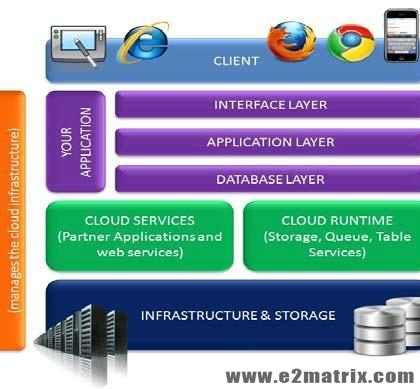TYPES OF SCHEDULING ALGORITHMS

Various advancements have been made towards different calculations for designating, scheduling and scaling the assets productively in the cloud. The essential target of scheduling calculation is: execution upgrade and enhancing the nature of administration alongside keeping up the productivity and decency among the employments and decrease the execution cost. Customary Types of scheduling Algorithms calculations are insufficient able to accomplish these destinations. So to overcome these limitations various enhanced algorithms are proposed. Cloud computing is a rising technique. So to upgrade the utilization of advantage in cloud, minimizing the planning cost, extend the execution of the server, minimizing the taking care of time and complete time it is extraordinarily imperative to logbook the assignments in the cloud. Diverse creators have considered the scheduling issue and have been seen as N-P hard.
TYPES OF SCHEDULING ALGORITHMS
With the utilization of various approaches, a few structures were proposed by creators to handle this scheduling issue and among those timetables that have achieved best results. The following are the some different types of Scheduling Algorithms:
- First Come First Serve (FCFS)
First Come First Serve alias First in First out suggests that the jobs are executed as per the order of job arriving time. The FCFS algorithm may further breed the convoy effect which usually takes place when there is a job with a huge amount of workload in the job queue. In this scenario, all the jobs which are queued behind have to wait a long time for the long job to finish.
- Shortest Job First Scheduling Algorithm
Shortest Job First (SJF) or Shortest Job Next (SJN) picks up the task with the least execution time. Highest priority is assigned to the jobs with minimum execution time and placed first in queue while the lowest priority is assigned to the job with the maximum execution time. It can be either pre-emptive or non-preemptive. A pre-emptive SJF algorithmic rule can stop the method presented in execution, whereas a non-pre-emptive SJF algorithmic rule can let the running method to end its half.
- Round Robin scheduling algorithm (RR)
Round Robin algorithm is considered as one of the simplest, conventional and most used scheduling algorithms which works exceptionally better for timesharing systems. It distributes the load equally to all the resources. It works very similar way in cloud computing as it does in process scheduling. The working includes a circular queue and a fixed time unit called quantum. Each individual job’s execution takes place only within this quantum. The whole process goes like this: first of all the first process from the queue is picked by CPU scheduler after which it sets a timer to interrupt after one quantum and then finally the process is dispatched. In case if the job does not achieve in one allotted quantum, it returns to the queue and wait for the following round. The massive benefit is that jobs are executed in a sequence turn wise and there is need to wait for the previous job to get complete. Therefore, there is no starvation issue. But the dark side is that if the workload is heavy and queue is fully loaded, it takes a lot of time to accomplish all the jobs and moreover, a perfectly suitable time quantum is hard to decide.
- Priority-based Job Scheduling Algorithm
In order to reduce the makespan time, another Priority based Job Scheduling (PJSC) Algorithm for cloud computing has been proposed by Ghanbari.S, which is pre-emptive in nature where each process in the system is based on the priority and priority is allowed to run. The highest priority job can run first whereas lower priority job can be made to wait. Equal-Priority processes are scheduled in FCFS order. The drawback of this algorithm is starvation of a process.
- Min-Min scheduling algorithm
The working concept behind the Min-Min algorithm is to map each task to resources such that they can accomplish the task in the minimum possible time. It estimates the execution and completion time of each job on each available resource. There are two phases of the Min-Min algorithm. In the first phase, it calculates the least execution time of all tasks. Further, in the second phase, the task with the least execution time among all the tasks is picked up. The algorithm further assigns the task to the resource producing the minimum completion time. The same procedure goes on repeating until all the tasks are scheduled.
- Max-Min scheduling algorithm
The Max-min algorithm works very similarly to the Min-min algorithm. The differentiating feature is as per the name because in this the word “min” is replaced by “max”; i.e the task having the utmost earliest completion time is allotted to the corresponding resource. Here, larger tasks are given priority over the smaller tasks.
- RASA Task Scheduling Algorithm
RASA is a new scheduling algorithm composed of two traditional techniques- Max-min and min-min. A min-min strategy is used to execute small tasks before large tasks and Max- Min strategy is applied to avoid the delays in large tasks execution. Both the ways are used for tasks and alternative exchange ends up in the consecutive execution of a tiny low and an outsized task on totally different resources, therefore, ignoring the waiting time of the tiny tasks in Max-min rule and therefore the waiting time of the massive tasks in the Min-min algorithm.
- Schedule First, Manage Later: Network-Aware Load balancing
A novel plan that brings about no correspondence overhead between the clients and the servers upon job landing, in this manner expelling any scheduling overhead from the job’s basic path. This Approach enhances the normal queuing overhead over customary plans by a component of 9 (or more) under all load conditions. Moreover, demonstrate that algorithm stays productive even at the point when the between server signal spread postponement is noteworthy (with respect to the jobs execution time). Heuristic answers for the execution corruption is provided that happens in such cases and appear, by re-enactments, proficiently alleviating the negative impact of proliferation postponements. For the effectiveness of the proposed approach in a genuine situation, load balancing framework is executed in view of it, sending the framework on the Amazon Elastic Compute Cloud (EC2), and measuring its execution.
- Pre-emptive Scheduling of On-line Real-time services with task migration
An online planning issue of in-progress errands utilizing “Infrastructure as a Service” model offered by cloud computing. The continued errands are set-aside pre-emptively with the goal of increasing the mixture utility and effectiveness to minimize the reaction time and to enhance the effectiveness of the assignments. The assignments are relocated to another virtual machine at whatever point any task misses its due date. This enhances the general framework execution and amplifies the aggregate utility. The proposed calculation can essentially beat the EDF and Non Pre-emptive scheduling calculation.
- Hyper-Heuristic Scheduling Algorithm
A novel Hyper-Heuristic Scheduling Algorithm to grasp JSP to diminish makespan time and to find better scheduling answers for cloud computing structures. Two discovery administrators have been used by the proposed calculation to modify the escalation and extension in the chase of arrangements amid the meeting technique.
- Particle Swarm Optimization Algorithm
A particle swarm optimization (PSO) based heuristic to timetable applications to cloud assets that consider both calculation expense and information transmission cost. It is utilized for work process application by changing its calculation and correspondence costs. It compares about the cost investment funds when utilizing PSO and existing ‘Best Resource Selection’ (BRS) calculation. The outcomes demonstrate that PSO can accomplish 3 times cost investment funds as contrasted with BRS, and great circulation of the workload onto resources.
- Ant Colony Optimization scheduling
Several researchers have impressed from social behavior of insects and ants have impressed a variety of strategies of improvement technique called Ant colony optimization (ACO). This algorithm has an edge over the unique approach in which every ant assemble their own particular individual result set and it is later on incorporated into a complete arrangement.
The basic approach is to emulate the foraging behavior of ants. While searching for food, ants normally communicate using a particular kind of chemical known as pheromone. Starting with random search once the ants get succeeded in finding a food source, they leave pheromone on that path and it becomes traceable by other ants. Ant colony optimization is irregular enhancement seek an approach that will be utilized for designating the approaching occupations to the virtual machines. With the continuation in the process, ants tend to choose the shortest path with the huge amount of pheromone accumulated over there.
- Bees Life algorithm for job scheduling in cloud computing
Bee Swarm advancement calculation called Bees Life Algorithm (BLA) connected to profitably arrange calculation jobs among making ready assets onto the cloud datacenters. it’s thought of as NP-Complete issue and it goes for spreading the workloads among the making ready assets in a perfect manner to diminish the mixture execution time of occupations and afterward, to create strides the viability of the whole cloud computing administrations.
It is used for both combinatorial and computational problems and provides both kinds of general and optimal solutions. It aims at spreading the workloads among resources
in an optimal fashion to reduce total execution time, cut execution costs and improve the effectiveness of cloud services.




u guys really help me a lot ………………… Thanks